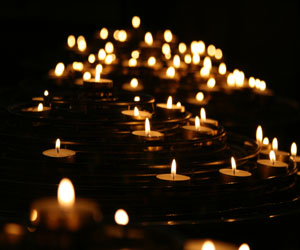


Earth-Saving Crafts

In today's world, the environmental crisis demands our attention and action. It's becoming increasingly apparent that sustainability and conservation are not just buzzwords but necessities for the survival of our planet. Amidst the calls for change, a heartening trend has emerged - earth-saving crafts. These eco-conscious, creative endeavors not only provide an avenue for self-expression but also serve as a tangible contribution to environmental preservation.
The Essence Of Earth-Saving Crafts
Earth-saving crafts are a multifaceted movement that integrates creativity, sustainability, and a strong commitment to reducing waste. The core idea behind these crafts is to repurpose and upcycle items that would otherwise end up in landfills. It's about taking discarded or unused materials and turning them into functional, beautiful, and environmentally-friendly pieces of art or utility.
Environmental Impact
One of the most significant aspects of earth-saving crafts is their direct impact on the environment. By reusing materials, these crafts reduce the demand for new resources, saving energy and conserving raw materials. Crafting from waste materials not only lowers carbon footprints but also lessens the burden on landfills. It's a small, yet crucial, step toward mitigating the detrimental effects of overconsumption and waste generation.
Empowering Individuals
Engaging in earth-saving crafts is empowering. It fosters a sense of self-sufficiency and self-expression. Crafting allows individuals to take control of their environmental impact and make conscious choices. It encourages people to think outside the box and find new uses for old items, thereby reducing their reliance on mass-produced, environmentally-harmful goods.
A Platform For Innovation
Earth-saving crafts promote innovation and creativity. When faced with limited resources, crafters often devise ingenious solutions to repurpose materials. This sparks fresh ideas and unique designs. The combination of limited resources and boundless creativity gives rise to one-of-a-kind creations.
A Community Of Like-Minded Individuals
Engaging in earth-saving crafts often leads to the discovery of a thriving community of like-minded individuals. This community provides support, inspiration, and opportunities to learn and share knowledge. It's a network of people who are passionate about making a difference through their creative pursuits.
The Beauty Of Imperfection
In a world that often values perfection and uniformity, earth-saving crafts celebrate imperfection. The wear and tear on materials and their history become part of the charm of the final product. Each piece carries a unique story and character, making it more personal and meaningful.
A Step Toward Conscious Consumption
Earth-saving crafts align with the growing trend of conscious consumption. They encourage individuals to think before they buy and to invest in quality items that can be repurposed or upcycled in the future. This shift in mindset can lead to more sustainable consumer choices.
Earth-saving crafts are more than just a creative pastime. They are a movement with a profound environmental impact. Engaging in these crafts can be a rewarding way to contribute to the planet's preservation. It empowers individuals, fosters innovation, and connects like-minded people. By embracing the essence of earth-saving crafts, we can be a part of a global effort to reduce waste and conserve our precious Earth.

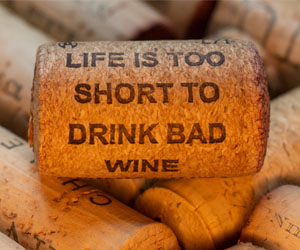
A Step-By-Step Guide
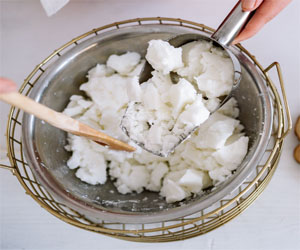 Gathering Materials
Gathering Materials
The first step in the candle making process is to gather all the necessary materials and tools. This typically includes wax (common options are paraffin, soy, or beeswax), a double boiler or microwave for melting the wax, a thermometer, wicks, fragrance oils, and candle dyes if you want to add color. It's essential to ensure that your workspace is clean and well-ventilated for safety.
Melting The Wax
Once you have all your materials ready, it's time to melt the wax. This can be done by using a double boiler or a microwave. If using a double boiler, place the wax in the top pot and heat it gently until it becomes a liquid. If using a microwave, cut the wax into smaller pieces, place it in a microwave-safe container, and heat it in short bursts until it's fully melted. It's crucial to monitor the temperature of the wax using a thermometer to prevent overheating, which can be dangerous.
Adding Fragrance And Color
If you want to create scented and colored candles, this is the stage to do so. Add fragrance oils to the melted wax and stir thoroughly to ensure an even distribution of the scent. Similarly, add candle dye to achieve your desired color. The amount of fragrance and dye you use will depend on the type and brand, so consult the instructions provided with your supplies.
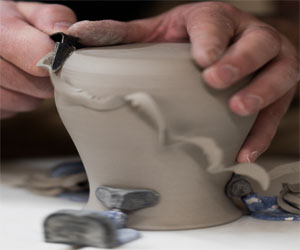
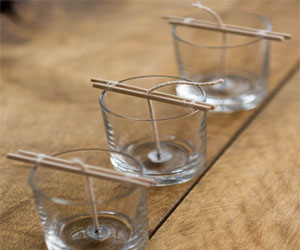
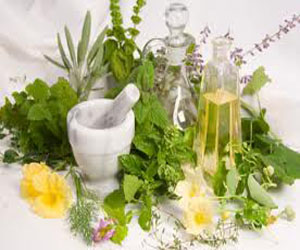
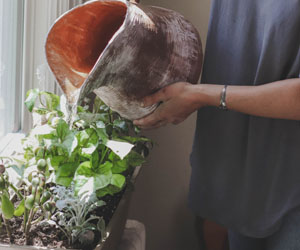
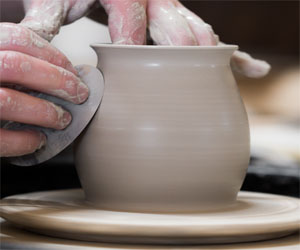
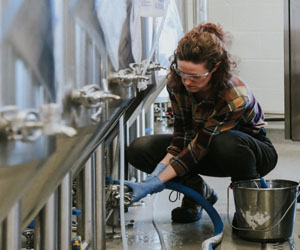
Tips For Every Enthusiast
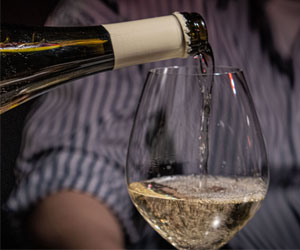 3. Explore Different Wine Glasses: The shape of your wine glass can impact your wine appreciation experience. Specific glass shapes are designed to enhance the aromas and flavors of different wine types. Investing in a set of quality wine glasses can make a noticeable difference in your tasting experience.
3. Explore Different Wine Glasses: The shape of your wine glass can impact your wine appreciation experience. Specific glass shapes are designed to enhance the aromas and flavors of different wine types. Investing in a set of quality wine glasses can make a noticeable difference in your tasting experience.
4. Understand The Importance Of Temperature: Serving wine at the appropriate temperature is vital. Reds, whites, and sparkling wines all have their ideal serving temperatures. Generally, red wines are served slightly warmer than white wines. Invest in a wine thermometer to ensure you're serving your wine at the right temperature.
5. Learn How To Pair Wine With Food: Food and wine pairing can be a magical combination that enhances both the meal and the wine. Certain wines complement specific dishes, bringing out the best in both. For example, try pairing a rich, red Bordeaux with a well-marbled steak or a crisp, acidic Sauvignon Blanc with seafood. Experimenting with pairings is an exciting part of wine appreciation.
6. Start A Tasting Journal: Consider keeping a wine tasting journal to document your experiences. Note the wines you've tried, your impressions, and any interesting details.
Strategies For Success
 Stress: Constantly trying to meet tight deadlines and fulfill numerous commitments can lead to elevated stress levels. This stress can, in turn, affect your overall health, including your sleep, immune system, and emotional well-being.
Stress: Constantly trying to meet tight deadlines and fulfill numerous commitments can lead to elevated stress levels. This stress can, in turn, affect your overall health, including your sleep, immune system, and emotional well-being.
Burnout: A demanding schedule, when not managed properly, can lead to burnout - a state of physical, emotional, and mental exhaustion. Burnout can negatively impact your performance, creativity, and enthusiasm for life.
Health Issues: Neglecting self-care, such as exercise, proper nutrition, and relaxation, can result in various health problems, including weight gain, cardiovascular issues, and mental health challenges.
Strategies For Navigating Demanding Schedules
To tackle the challenges of demanding schedules and maintain a healthy work-life balance, consider implementing the following strategies:
Prioritize Tasks: Start by identifying your most important tasks and responsibilities. Focus on these first and allocate your time accordingly. Use to-do lists or time management apps to help you stay organized.
Set Boundaries: Learn to say no when necessary. It's crucial to establish boundaries that protect your personal time and prevent over-commitment.
Delegate: If possible, delegate tasks to others, whether at work or home. Sharing responsibilities can lighten your load and free up time for more critical activities.
Time Management: Improve your time management skills by setting specific time blocks for various tasks. Avoid multitasking, as it can lead to reduced productivity and increased stress.
Self-Care: Prioritize self-care activities, including regular exercise, healthy eating, adequate sleep, and relaxation techniques. Caring for your physical and mental health is vital in managing the demands of a busy schedule.
A Journey To Wellness And Vitality
 Plant-Based Healing: Plants are a rich source of healing properties. Aloe vera, for instance, has been used for centuries to treat burns and skin irritations. Turmeric is renowned for its anti-inflammatory and antioxidant properties. Ginkgo biloba is used to enhance memory and cognitive function.
Plant-Based Healing: Plants are a rich source of healing properties. Aloe vera, for instance, has been used for centuries to treat burns and skin irritations. Turmeric is renowned for its anti-inflammatory and antioxidant properties. Ginkgo biloba is used to enhance memory and cognitive function.
Herbal Elixirs: Herbal remedies often take the form of teas, tinctures, or infusions. Herbs like chamomile and lavender are known for their calming effects, while Echinacea is a popular choice for boosting the immune system.
Essential Oils: Essential oils are highly concentrated extracts from plants and are used in aromatherapy and topical applications. Lavender oil promotes relaxation and sleep, while tea tree oil has potent antimicrobial properties.
Healing Crystals And Minerals: Crystals like amethyst, rose quartz, and citrine are believed to possess healing energies. They are often used in energy work and meditation to restore balance and harmony.
Holistic Approach: The healing properties of natural elements are not limited to physical ailments. They are also used to address mental and emotional well-being. Aromatherapy, for instance, can alleviate stress and anxiety.
Detoxification: Healing properties often include detoxification. Ingredients like dandelion root and milk thistle support the liver in removing toxins from the body.
Mind-Body Connection: Many healing practices recognize the deep connection between the mind and the body. Meditation, yoga, and mindfulness techniques harness the mind's power to promote healing.
The Power Of Touch: Therapeutic touch, massage, and acupuncture are healing modalities that involve physical interaction to alleviate pain, tension, and promote relaxation.
Crafted With Love And Sustainability
 Uniqueness And Personalization
Uniqueness And Personalization
DIY upcycled gifts are unique and personalized. Each creation is one-of-a-kind, reflecting the maker's individual style and the recipient's preferences. Whether it's upcycled jewelry, a hand-sewn bag, or repurposed decor, the inherent charm of these gifts is in their distinctiveness.
Endless Possibilities
The possibilities for DIY upcycled gifts are virtually limitless. Some popular ideas include turning vintage teacups into candles, transforming old windows into picture frames, crafting planters from used containers, and creating tote bags from discarded clothing. With a little imagination and resourcefulness, the sky's the limit.
Getting Started With DIY Upcycled Gifts
Gather Materials: Start by collecting the materials you'll need for your chosen project. This may involve hunting for discarded items, vintage finds, or materials you already have at home.
Choose The Right Project: Select a DIY project that aligns with the recipient's tastes and needs. Consider their hobbies, interests, and the occasion.
Learn Techniques: If you're new to upcycling, research and familiarize yourself with the necessary techniques for your chosen project. There are numerous online tutorials, books, and resources available.
Personalize Your Creation: Add a personal touch to your upcycled gift. You can do this by incorporating the recipient's favorite colors, adding custom designs, or incorporating a heartfelt message.
Safety First: Be mindful of safety precautions, especially when working with tools, paints, or materials that may have sharp edges or require special handling.